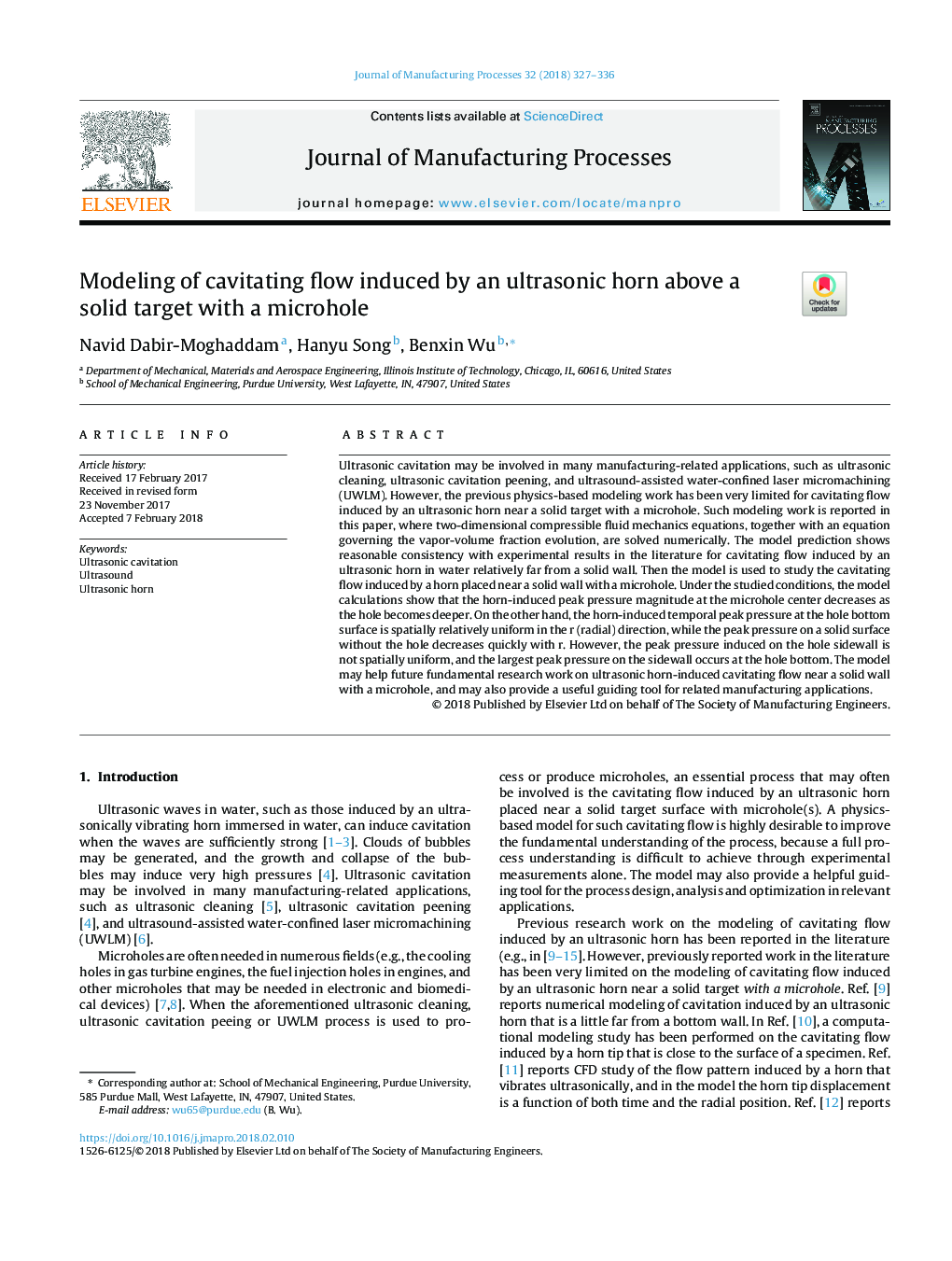| Article ID | Journal | Published Year | Pages | File Type |
|---|---|---|---|---|
| 8047987 | Journal of Manufacturing Processes | 2018 | 10 Pages |
Abstract
Ultrasonic cavitation may be involved in many manufacturing-related applications, such as ultrasonic cleaning, ultrasonic cavitation peening, and ultrasound-assisted water-confined laser micromachining (UWLM). However, the previous physics-based modeling work has been very limited for cavitating flow induced by an ultrasonic horn near a solid target with a microhole. Such modeling work is reported in this paper, where two-dimensional compressible fluid mechanics equations, together with an equation governing the vapor-volume fraction evolution, are solved numerically. The model prediction shows reasonable consistency with experimental results in the literature for cavitating flow induced by an ultrasonic horn in water relatively far from a solid wall. Then the model is used to study the cavitating flow induced by a horn placed near a solid wall with a microhole. Under the studied conditions, the model calculations show that the horn-induced peak pressure magnitude at the microhole center decreases as the hole becomes deeper. On the other hand, the horn-induced temporal peak pressure at the hole bottom surface is spatially relatively uniform in the r (radial) direction, while the peak pressure on a solid surface without the hole decreases quickly with r. However, the peak pressure induced on the hole sidewall is not spatially uniform, and the largest peak pressure on the sidewall occurs at the hole bottom. The model may help future fundamental research work on ultrasonic horn-induced cavitating flow near a solid wall with a microhole, and may also provide a useful guiding tool for related manufacturing applications.
Related Topics
Physical Sciences and Engineering
Engineering
Industrial and Manufacturing Engineering
Authors
Navid Dabir-Moghaddam, Hanyu Song, Benxin Wu,
